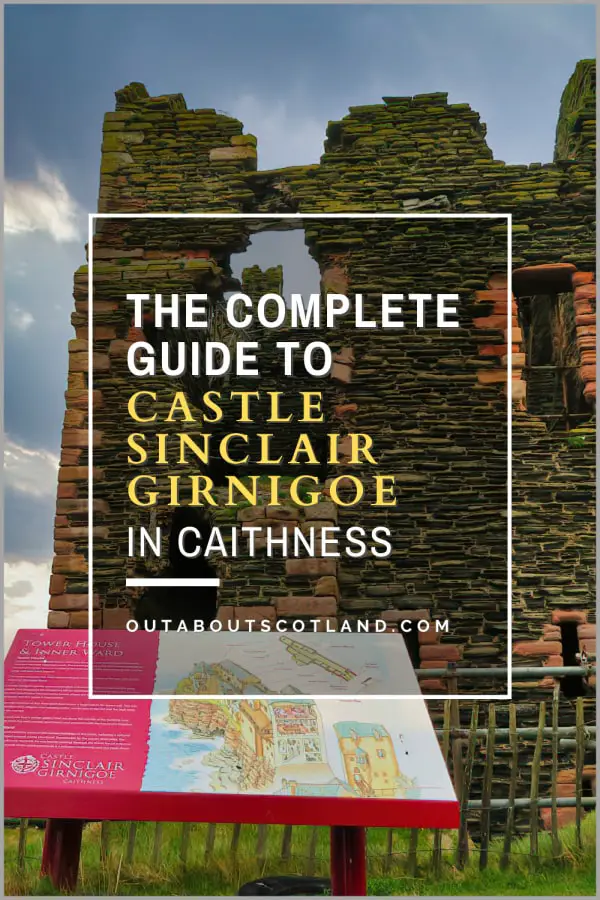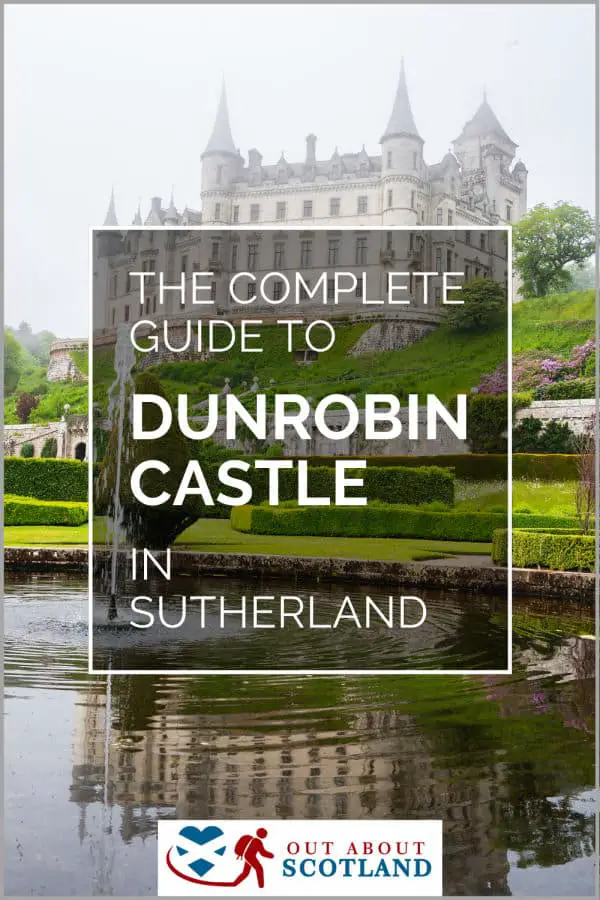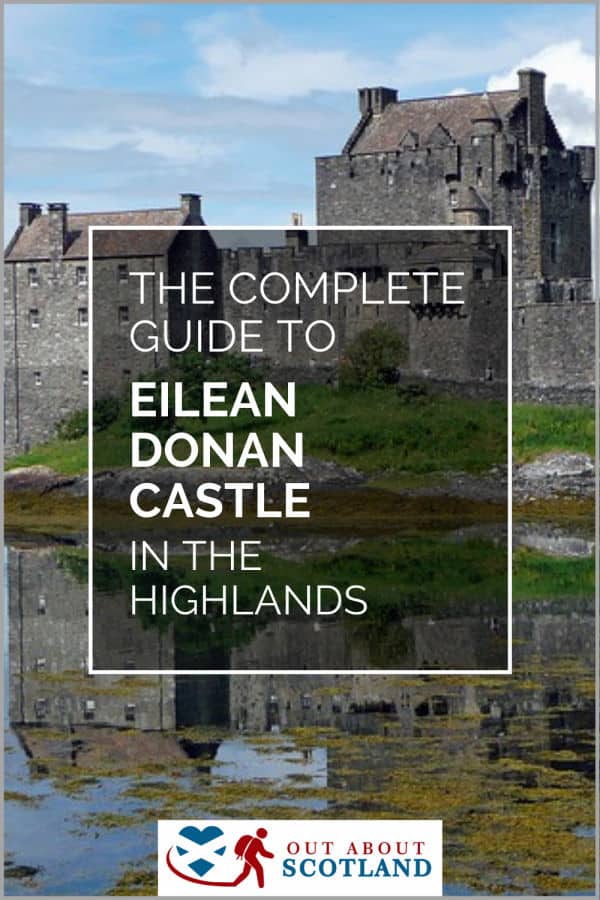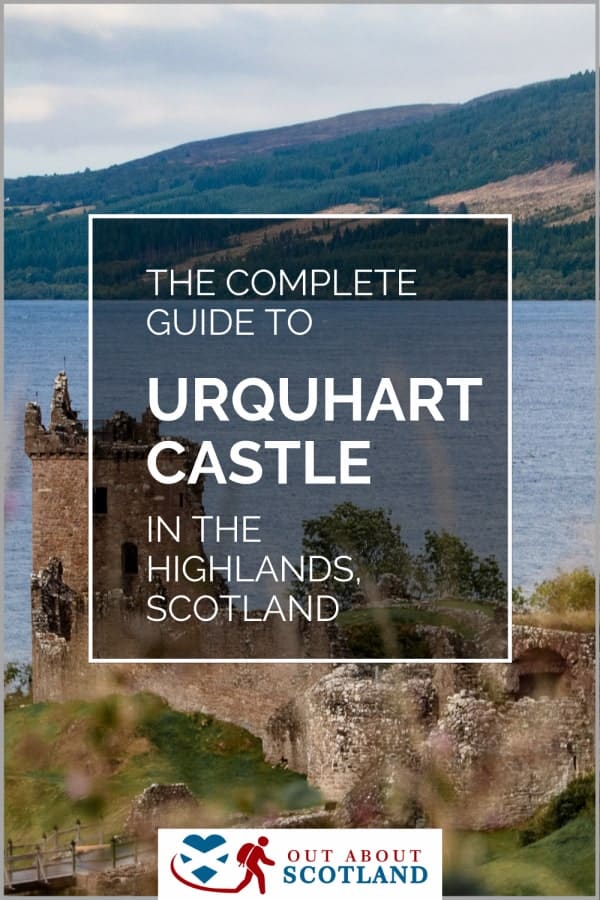The castles of Scotland have a long and fascinating history. From the days of the Picts to the times of William Wallace and Robert the Bruce, these imposing structures have witnessed some of the most momentous events in Scotland’s history and have been integral in making Scotland the country it is today.
There are almost 1,500 surviving Scottish castles, ranging from hilltop watchtowers to enormous royal palaces, and all can be roughly divided into two types: curtain-walled forts from the Middle Ages and tower houses from the 14th to 17th centuries, the majority of which are open to the public as tourist attractions.
For those looking for a unique experience, a journey to the Scottish Highlands to visit the region’s stunning castles is an adventure that’s guaranteed to create memories that will last a lifetime.
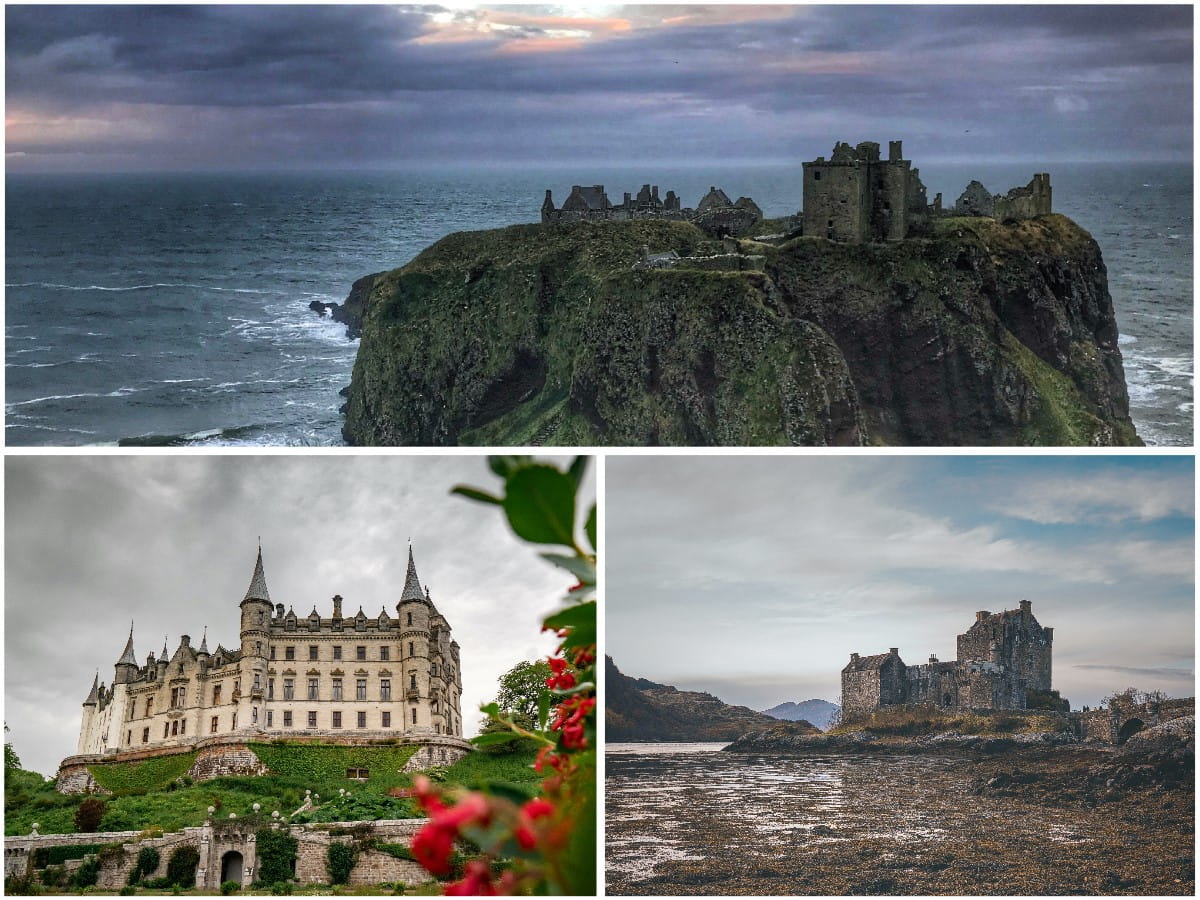
The Best Castles in the Scottish Highlands
Scotland has one of the greatest collections of castles in the world, with over two thousand built between the 12th and 18th centuries. Although these castles took on many different forms, they were all built to keep their inhabitants safe, which means they were – and still are – the most formidable man-made structures in the country.
There’s a wide variety of castles to see during a visit to Scotland, from the iron-age broch (a hollow-walled cylindrical structure) to the mediaeval dun (a type of hillfort), but most are either curtain-walled square keeps or more elaborate fortified houses.
These atmosphere-drenched buildings are waiting to transport you in time across a thousand years of Scotland’s history to the days of warring clans and battles against England, with brief detours into royal scandals and Jacobite uprisings. Exploring Scotland’s castles is really a journey into the story of Scotland itself, and perhaps it’s the only way to truly understand what a fascinating history this country has.
Brodick Castle
- Address: Brodick, North Ayrshire, KA27 8HY
- Contact details: Tel 01770 302202
- Out About Scotland Guide: Brodick Castle
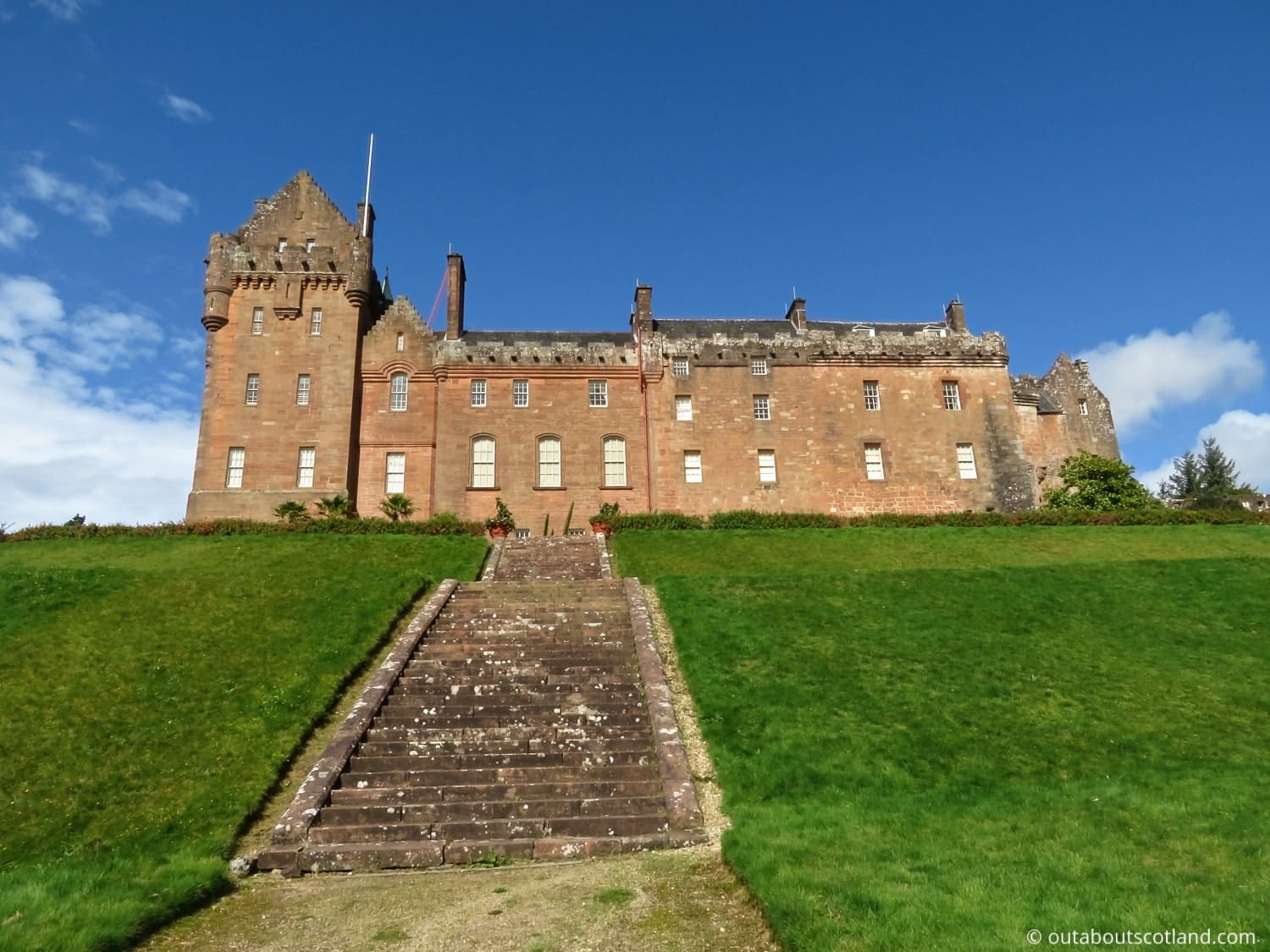
Brodick Castle is (unsurprisingly) located close to the village of Brodick on Arran’s eastern side, where it overlooks Brodick Bay to the south and Goatfell to the north. Getting there is simple as the castle is situated close to the A841, and footpaths along the coastline mean it’s possible to walk to it from the ferry terminal in around one hour.
It’s really two attractions in one, one half being the impressive castle which is open to visitors for self-guided tours, and the other half being the extensive gardens that are home to one of the greatest exotic plant collections in the country.
Thanks to Arran’s warmer-than-average microclimate, the gardens at Brodick Castle are able to sustain plants that would otherwise need special care in greenhouses, and there are many thriving specimens that are unable to grow outdoors anywhere else in Scotland.
In addition to the mini-jungle of the garden, there’s a sculpture trail, a walled garden, a large summerhouse, a woodland, a children’s play park, and a café, all of which offer visitors enough activities to keep them occupied for a full day. The castle, meanwhile, is the usual affair of a pre-set route through restored bedrooms, dining rooms, kitchens, and servants’ quarters, and there’s an obligatory gift shop at the exit.
There aren’t many rooms to view, but it’s an interesting tour that’s well worth the price of admission. Visitors have a choice of tickets for either the gardens on their own or combined entry to the castle and the gardens, or they can purchase a National Trust for Scotland membership, which allows unlimited free entry for 12 months.
Purchase your National Trust for Scotland membership directly from the NTS website.
Duart Castle
- Address: Isle of Mull, Scotland, PA64 6AP
- Contact details: Tel 01680 812309
- Out About Scotland Guide: Duart Castle
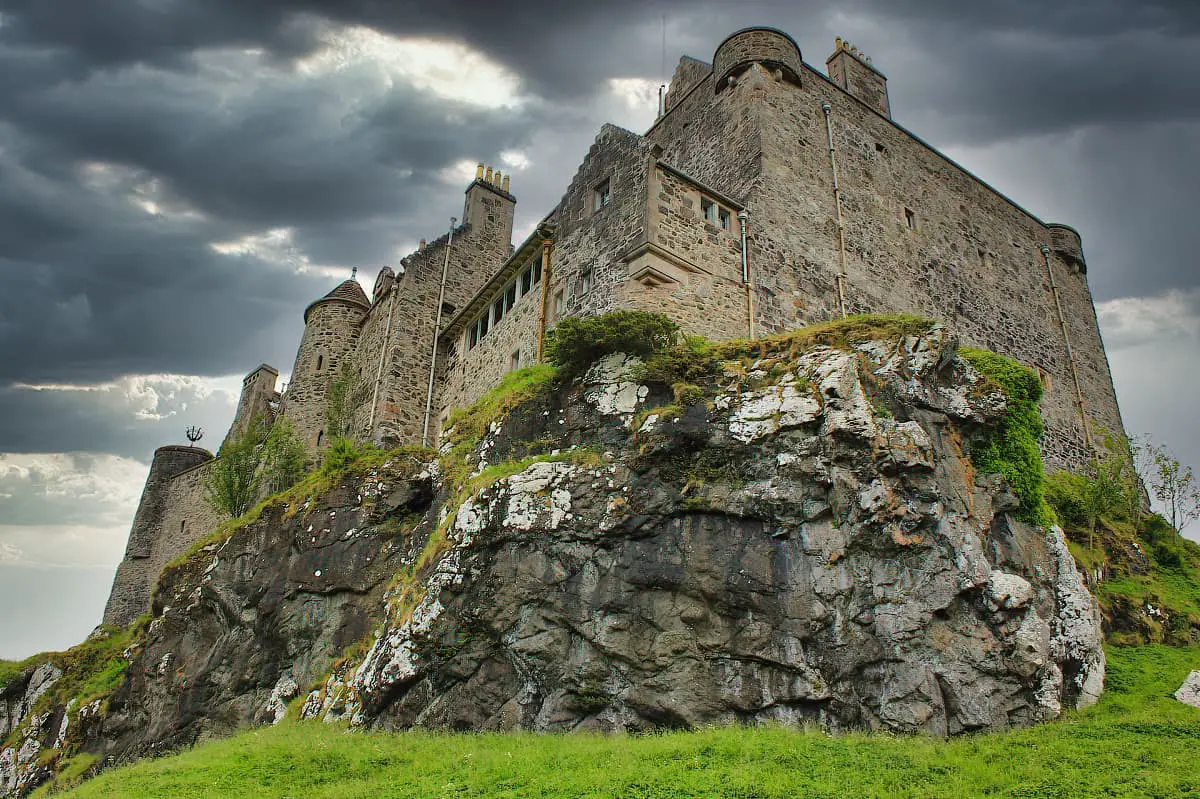
If you’re considering a holiday on one of Scotland’s west coast islands but can’t decide which one to visit, do yourself a favour and head to the Isle of Mull. The island is quieter than Skye, almost as pretty, and has what many people consider one of the finest castles in Scotland: Duart Castle.
This statuesque fortification sits on a promontory overlooking the Sound of Mull and Duart Bay. It’s easy to understand why Clan Maclean chose it as their seat of power for more than 700 years because it’s in such a commanding position it would have been near-impossible for attackers to sneak up on it unnoticed.
The castle is still privately owned by the MacLeans, but what you see today is markedly different from when it was originally built in the 13th century. The castle is not quite as old as it first appears because it was destroyed in 1691 and then completely rebuilt in 1911.
Duart Castle has a definite family feel to it, and much of the memorabilia inside has been handed down over generations – something that’s most obvious in the Great Hall, which features an impressive collection of family portraits and silverware.
A self-guided tour will take half an hour, after which you can explore the exterior where you’ll find shingle beaches and a nature trail through a woodland. There’s also a very good café in a separate building that offers quality food at a reasonable price, and there’s a shop that sells clan-themed gifts.
Dunstaffnage Castle
- Address: Dunbeg, By Oban, Argyll, PA37 1PZ
- Contact details: Tel. 01631 562 465
- Out About Scotland Guide: Dunstaffnage Castle
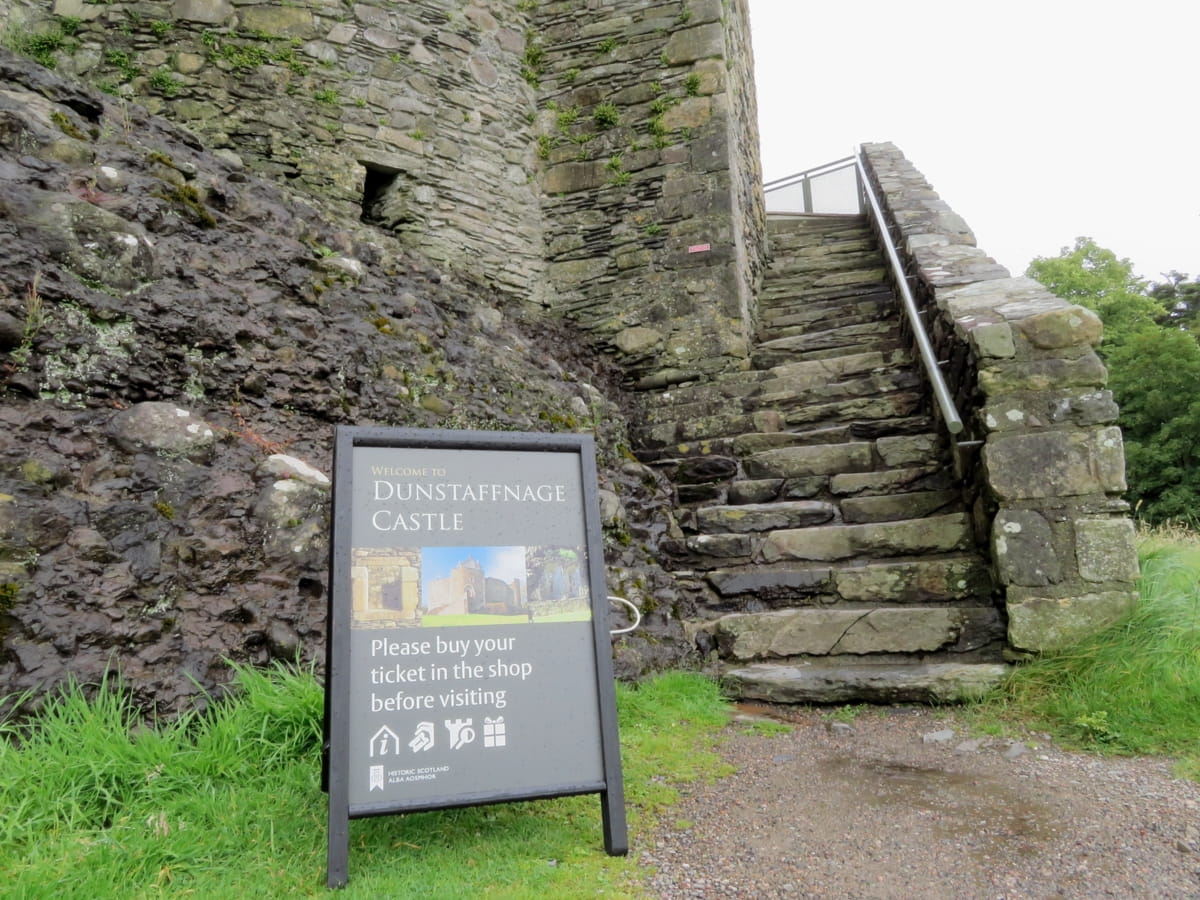
Dunstaffnage Castle isn’t the prettiest in this list but it’s certainly one of the most imposing, with a hulking mass of stone walls built on top of a rock outcrop that overlooks Ardmucknish Bay near Oban.
It was built as a defence against invading Norwegian armies who were plundering the Hebrides in the 1200s, and it saw military use right up until the Jacobite rebellion of 1745, after which it was abandoned. However, unlike many abandoned castles, Dunstaffnage remained entirely intact and the central tower house is now fully roofed with restored floors and windows.
The original curtain walls protect a large courtyard that has information panels explaining what the various parts of the castle were used for, and there’s a staircase leading up onto a walkway on top of the main wall that offers superb views across the bay to the islands of Lismore and Mull.
The woodlands surrounding Dunstaffnage Castle are home to a number of protected pipistrelle bats so you might be lucky enough to see them if you visit when the evening draws in. If not, I suggest taking a wander into the woodland as there’s a hidden 13th-century chapel in there that’s incredibly atmospheric (if a wee bit creepy).
The entrance kiosk for the castle is set within the grounds in a separate building that houses an exhibition about the castle’s use throughout the ages as well as one of its most famous inhabitants – Flora MacDonald – who helped Bonnie Prince Charlie escape to the Isle of Skye after his defeat at the Battle of Culloden.
Facilities at Dunstaffnage Castle include a small shop and toilets, and although there’s a car park, it’s set a few hundred yards away, which may not be suitable for disabled visitors.
Dunnottar Castle
- Address: Stonehaven, AB39 2TL
- Contact details: Tel 01569 766320
- Out About Scotland Guide: Dunnottar Castle
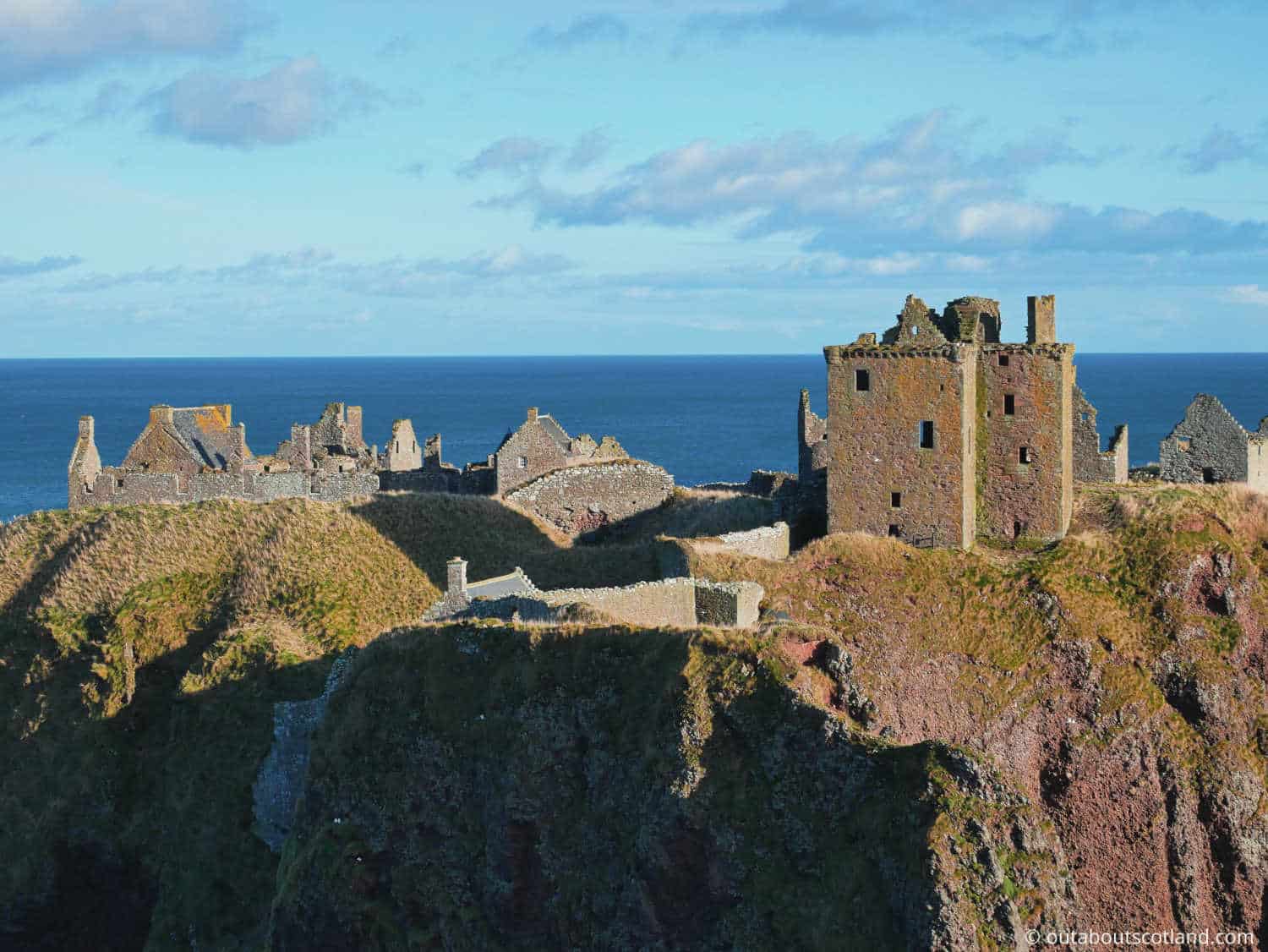
Of all the castles in Scotland, this one on the Aberdeenshire coast is the most picturesque. Not because of the castle itself, but because of its location on a promontory overlooking the North Sea, which is almost entirely cut off from the mainland except for a thin strip of land.
The castle was built in the 15th century for the Earl of Marischal, and as a defensive position, I’ve yet to see anywhere else that comes close, as access is only possible by either scaling near-vertical cliffs or ascending a narrow staircase that would have been easily defended back in the day.
Almost every part of Dunnottar Castle is open to the public, and visitors can explore the old residential buildings, the central courtyard with its huge well, the chapel, the ammunition buildings, the underground vaults, and the prison.
Dunnottar Castle is not under the control of Historic Environment Scotland, unlike the majority of historic attarctions of this size, so HES membership does not entitle visitors to free admission. That also means the entrance price is a wee bit cheaper than you’ll find at most HES sites, but there’s no shop or café.
A tour of Dunnottar Castle shouldn’t take more than one or two hours, so heading towards Stonehaven along the coastal footpath is a nice way to finish a visit. Along the way, keep your eyes open for dolphins and seals in Castle Haven and Strathlethan Bays and the Dunnicaer sea stacks, which are a favourite nesting site for thousands of seabirds.
If you don’t have a pair of birdwatching binoculars yet, take a look at these recommended budget binoculars.
Dunrobin Castle
- Address: Dunrobin, Golspie, Sutherland, KW10 6SF
- Contact details: Tel 01408 633177
- Out About Scotland Guide: Dunrobin Castle

Dunrobin Castle in the Northeast Highlands has to be one of, if not the prettiest, buildings in Scotland. In fact, to look at it, you wouldn’t immediately think it’s actually in Scotland because it was built to mimic a French château, with lots of conical turrets and extravagant stonework.
However, those contemporary features are a little deceptive because they’re actually built around a plain square keep. You can still see evidence of the old keep as you tour the castle, but it’s almost entirely hidden behind decorative wood carvings and plaster motifs.
If you’re interested in the oldest parts of Dunrobin, I suggest speaking to the castle guides who are very knowledgeable, or you can pick up a guidebook from the entrance kiosk that will tell you everything you might want to know.
The French château theme continues outside with manicured gardens designed to mimic the ones at the Palace of Versailles, which includes an enormous summerhouse that contains one of the finest private museums in Britain. Finally, after you’ve walked around the castle and the gardens, you might like to pop into the on-site café and gift shop, or take a walk down to the beach front which is close to Loch Fleet National Nature Reserve.
Eilean Donan Castle
- Address: Dornie, Kyle of Lochalsh, IV40 8DX
- Contact details: Tel 01599 555202
- Out About Scotland Guide: Eilean Donan Castle
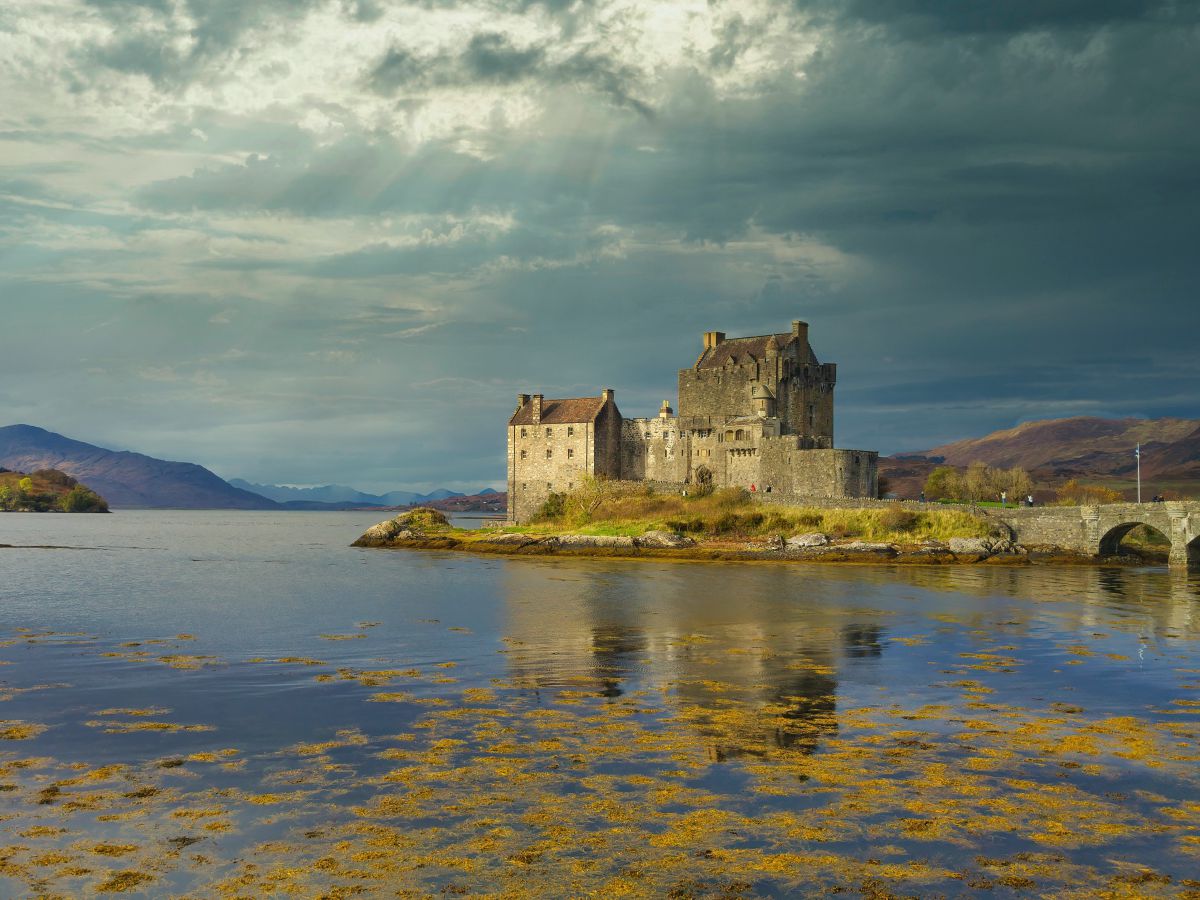
Eilean Donan Castle is located in one of the most spectacular settings in the Highlands, within the Kintail National Scenic Area and next to the picturesque waters of lochs Duich, Long, and Alsh. There has been a fortress on Eilean Donan island since the 13th century, but the building we see today is a relatively new structure built using stones from an earlier fortress that was demolished during the Jacobite uprising of 1745.
In 1932, a descendant of the MacRae clan rebuilt the fortress using the plans of the earlier castle along with a few much-needed alterations, most notably adding a bridge to improve access and a central keep that served as the clan family home. The castle is now a privately run venue that offers overnight accommodation with facilities to host weddings and events, but it’s also a tourist attraction that’s open for visitors to explore.
Each room in the castle is filled to the brim with clan MacRae memorabilia, along with many objects that have been collected to showcase the history of Scotland, including artwork and weapons that date from the 1700s. There’s also a very good visitor centre that houses a café (top tip: try the homemade scones), a gift shop, and an information centre that’s a great resource for finding more places to visit in the area.
Inveraray Castle
- Address: Inveraray, Argyll, PA32 8XE
- Contact details: Tel 01499 302203
- Out About Scotland Guide: Inveraray Castle
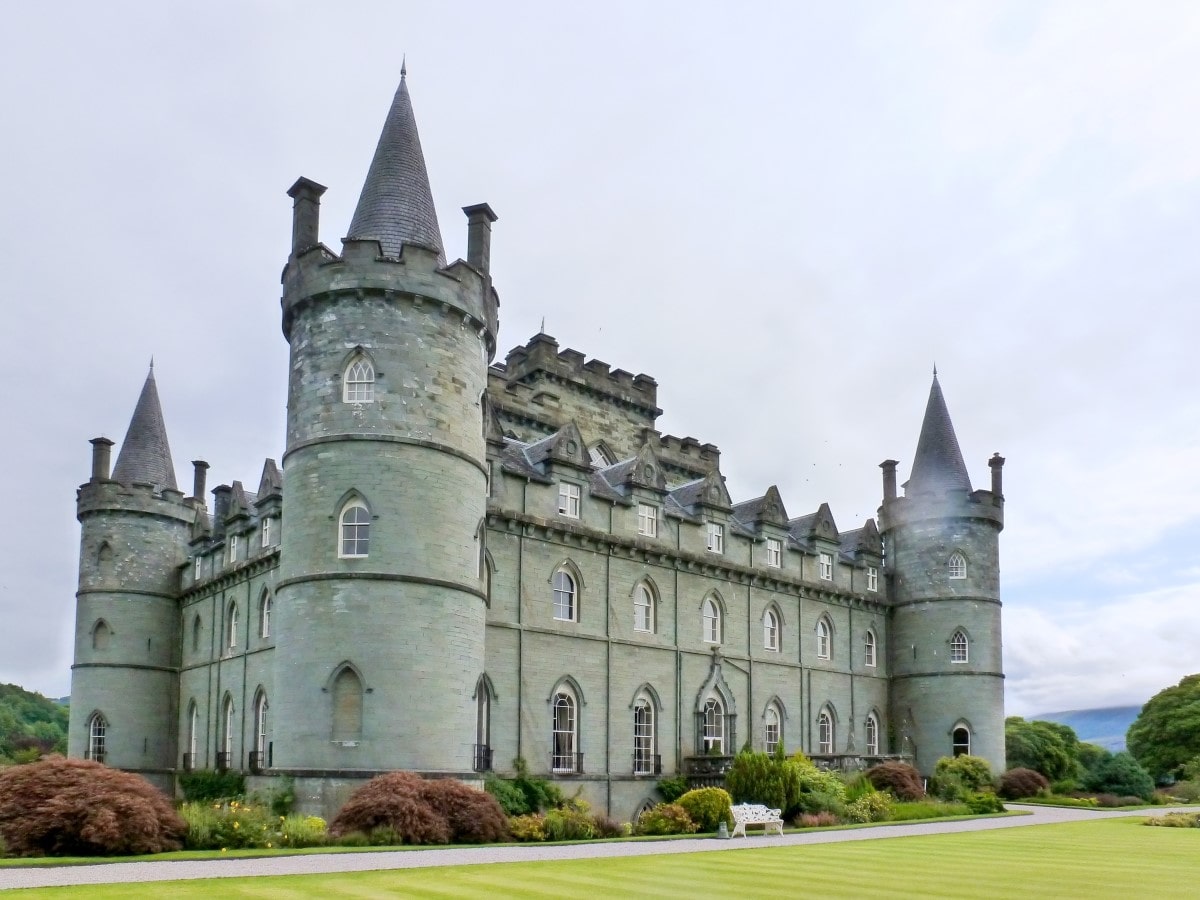
The village of Inveraray, located on the shore of Loch Fyne (the longest sea loch in Scotland), is home to Inveraray Castle, the 18th-century home of the Duke of Argyll. The castle is one of the most popular tourist sites in the region, drawing thousands of visitors to its beautiful architecture, sumptuous rooms, and impeccably maintained gardens.
Spending an afternoon at the castle is a must-do for all visitors to Argyll as it’s one of the finest examples of an inhabited castle in Scotland (the Duke and his family still live in one of the wings), and some of the rooms easily rival those in Edinburgh’s magnificent Holyrood Palace.
Take the armoury hall as an example. This grand room houses one of the largest private weaponry collections in the country and also has the highest ceiling of any building in Scotland at an incredible 21 metres (69 feet) at its highest point.
Having visited Inveraray Castle recently, I have to make a point to say the gardens are even more interesting than the castle is, thanks to the fact they’re absolutely enormous and cover 16 acres of woodland, lawns, and flower beds. As far as facilities go, Inveraray Castle is up there with the best of them, with an excellent café and gift shop, a large car park, toilets, and partial disabled access.
Kilchurn Castle
- Address: Lochawe, Dalmally, PA33 1AF
- Contact details: NA
- Out About Scotland Guide: Kilchurn Castle
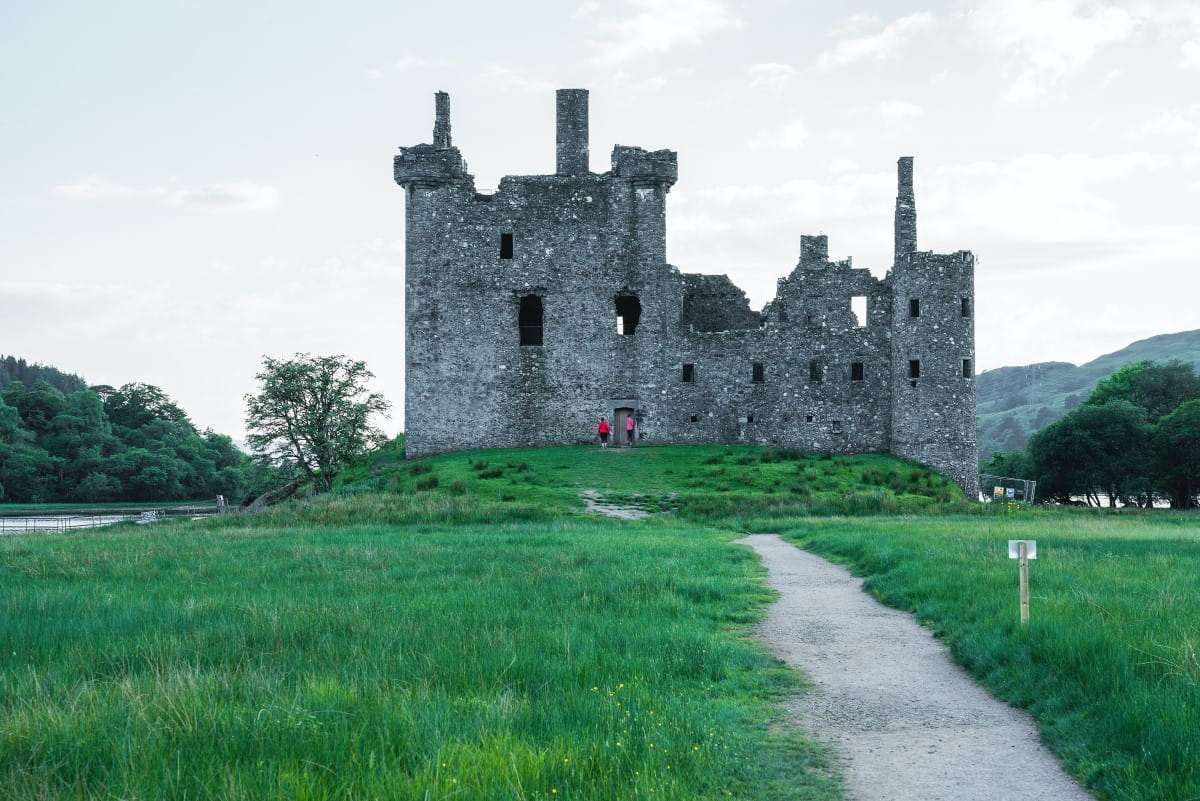
Kilchurn Castle in Argyll is located at the head of Loch Awe, 2 miles north of St. Conan’s Kirk and 2 miles west of the village of Dalmally. Access is via a car park just off the A85, which joins a footpath leading through moorland onto a promontory that juts into Loch Awe, with the castle perched on a raised mound at the far end.
The 1st Lord of Glenorchy constructed it in the middle of the 1500s, later converted it into an army barracks, and then abandoned it in the 1700s, which is why it’s in such a ruinous state today. That being said, it’s a very, very scenic place, with flat plains of grassland in all directions, the glassy Loch Awe to the front, and mountain ranges set against the horizon as far as the eye can see.
Although Historic Environment Scotland is in charge of managing this site, there is no entrance fee. The downside is that because the castle is unmanned, the front door is often locked, meaning it’s hit-or-miss whether you’ll be able to venture inside. If you do, you’ll find a small courtyard within roofless walls, along with a single lookout tower that you can climb to get a nice view of Loch Awe.
Externally, you’ll find a makeshift path leading down to the shoreline behind the castle where visitors can view it from an alternative angle (as long as they’re not getting eaten alive by midges…), and another rough track that leads around the far side of the castle in a short loop.
However, the best viewpoint is located on the southern side of the loch, just off the A819, where there’s a lay-by and a footpath leading down to the water’s edge. If you have a camera, this is the best location to get a memorable shot as the panoramic view with the mountains in the background is nothing short of breathtaking.
Lochranza Castle
- Address: Lochranza, Isle of Arran, KA27 8HL
- Contact details: NA
- Out About Scotland Guide: Lochranza
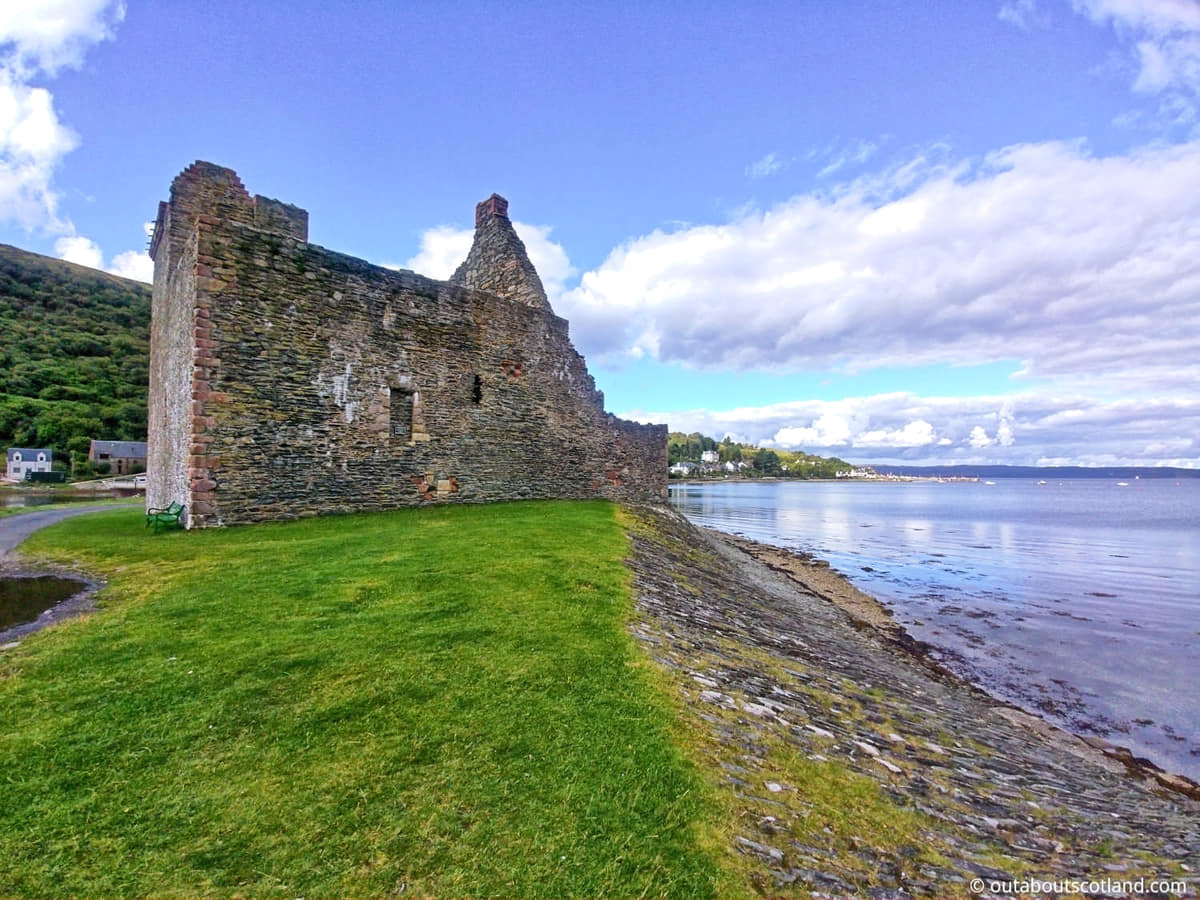
The Isle of Arran may be known as one of Scotland’s premier outdoor destinations thanks to its mountains, coastline, and forests, but there are a number of historic attractions that are worth visiting as well, including the lovely village of Lochranza and its small castle.
Lochranza is located on the northernmost tip of the island, where it sits in the shadow of the Torr Meadhonach hills. Access to the rest of Arran is easy thanks to the A841 ring road, and due to the fact the village has a ferry service to the mainland and a whisky distillery, it’s worth visiting in its own right.
The 13th-century castle sits on a strip of land that juts into the sea loch, with a single-track road running to it. It’s a small castle, and to be honest, there’s nothing exceptional about it, but I’m including it in this list as the location is stunning and it’s a great stopping-off point for anyone cycling or driving around the Arran Coastal Way.
The castle (it’s actually more like a tower house) was built in the 1200s by the Lord of Knapdale and consists of a single 2-story tower and a newer residential building that was added in the 1500s. Unfortunately, the castle is almost entirely in ruins and there isn’t much to see inside, but Historic Environment Scotland hopes to renovate it in the future.
Note that while the castle is free to visit, it’s closed to the public from October to March so it isn’t worth making a visit to Lochranza to see it in the colder months. That being said, if you’re in the area for the ferry or to tour the whisky distillery, taking a few minutes to walk to the castle is a bit of a no-brainer.
Castle Sinclair Girnigoe
- Address: Wick, KW1 4QT
- Contact details: NA
- Out About Scotland Guide: Castle Sinclair Girnigoe
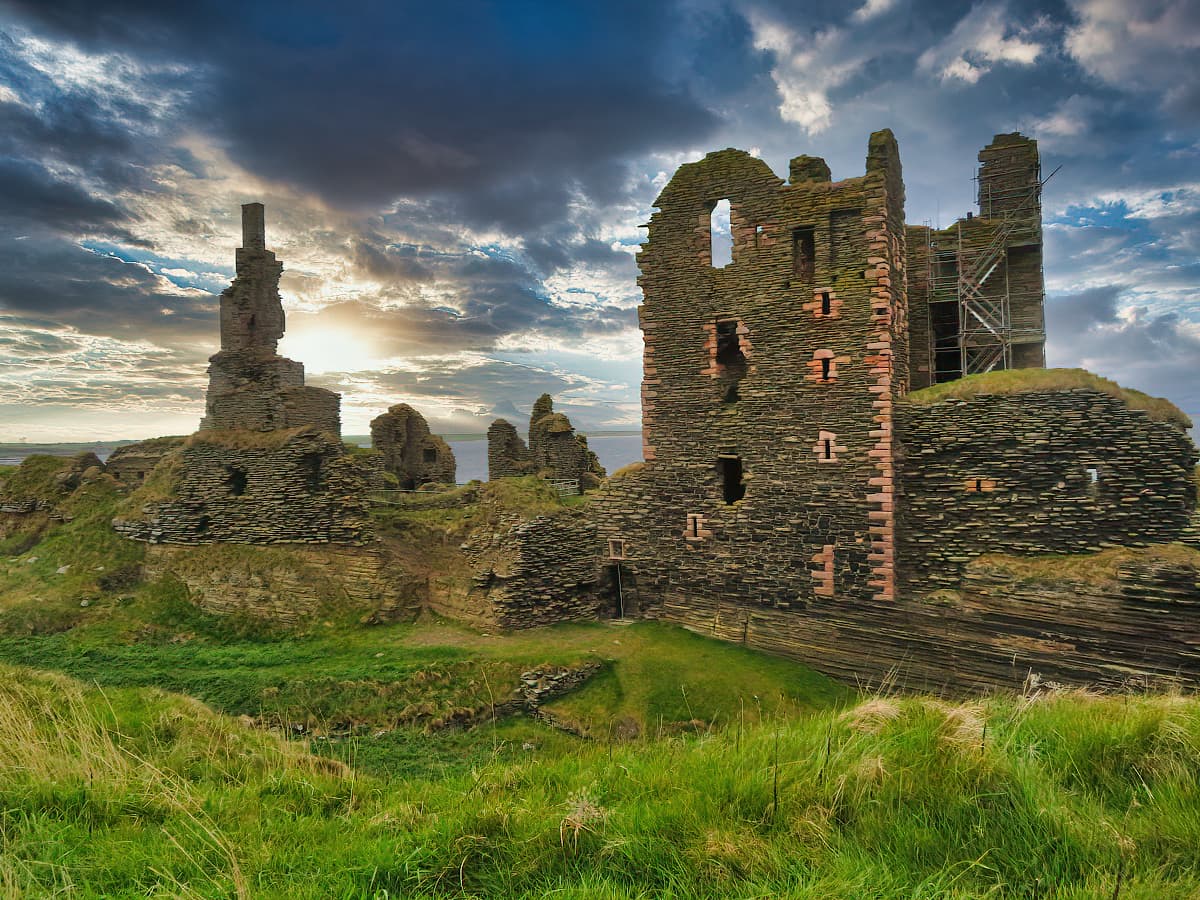
This is without a doubt the most dilapidated castle on this list, but it’s also one of the most atmospheric. There are actually two castles at the site – Castle Girnigoe and Castle Sinclair – that were built separately in the 1400s and 1600s, respectively, by the Earls of Caithness.
The oldest building (Castle Girnigoe) is entirely ruined and has been eroded away to the point where just a few ramshackle walls are left standing. The later castle is much more intact, but ironically it’s the older castle that visitors are able to explore as Castle Sinclair has been closed for several years for safety reasons.
Access to the castle is via a coastal path from a car park at the historic Noss Head lighthouse, with the path crossing rough grassland before it reaches the castle and continuing further around the headland. This stretch of coastline is well known for its steep cliffs, and Castle Sinclair Girnigoe perches precariously at the very edge, almost looking like it’s about to crash into the sea below.
Those cliffs would have made a seaward attack virtually impossible back in the days when the castle was built, and a natural dry moat around the clifftop would have made it easy to defend from the landward side, so it’s understandable that a new castle was built so close to the ruins of the old one.
The Sinclair Girnigoe Trust have added information panels and a wooden bridge over the moat, but other than that there are absolutely no facilities at the site so if you need food and toilets your best bet is to drive a couple of miles south to the town of Wick.
Due to its size, it won’t take long to visit this castle (maybe one hour), but it’s possible to spend a full afternoon looking at other clifftop castles in the area – Old Keiss Castle and Bucholie Castle – which are both easily accessed by driving north along the A99. There’s also a stunning golden beach bordering Sinclairs Bay, which is situated a couple of miles west of Castle Sinclair Girnigoe.
Spynie Palace
- Address: Elgin, Moray, IV30 5QG
- Contact details: Tel 01499 302203
- Out About Scotland Guide: Spynie Palace
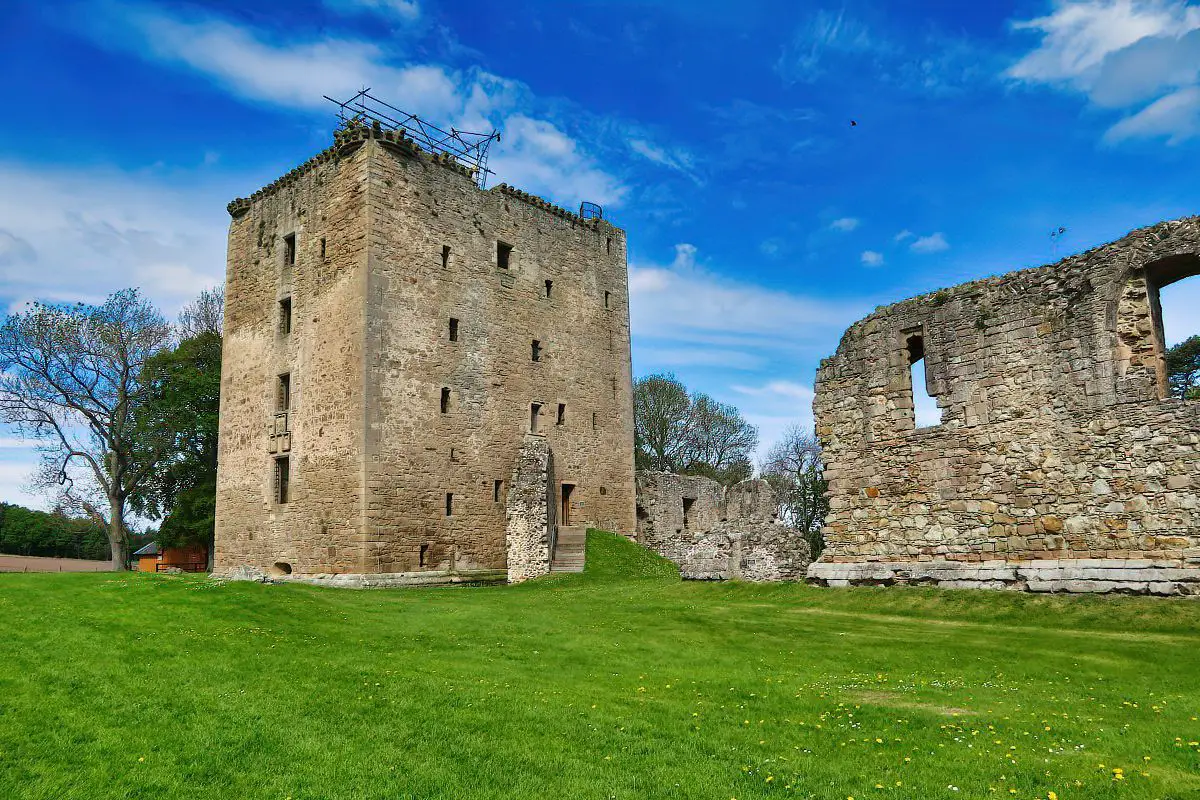
Although the name might lead you to believe this is a royal residence, it’s actually a fortified tower house that was used as the home of the bishops of Moray for over 500 years. The reason Spynie Palace was built in this remote area is that it’s close to Elgin, Moray’s administrative centre and the home of Elgin Cathedral.
The cathedral was one of the most important religious sites in Scotland back in the 13th century and the bishops who served there had a great deal of wealth and power, which is why the formidable Spynie Palace was built nearby.
David’s Tower, the largest tower house in Scotland by volume, dominates the ‘palace’ and is a must-visit due to the breathtaking views of the Moray countryside from the viewing platform at the top. Although it won’t take visitors long to explore the rest of the site (I’d plan for 30–45 minutes), you can upgrade your ticket to include entry to Elgin Cathedral which will keep families occupied for another hour, at least.
Urquhart Castle
- Address: Drumnadrochit, Inverness, IV63 6XJ
- Contact details: Tel 01456 450 551
- Out About Scotland Guide: Urquhart Castle
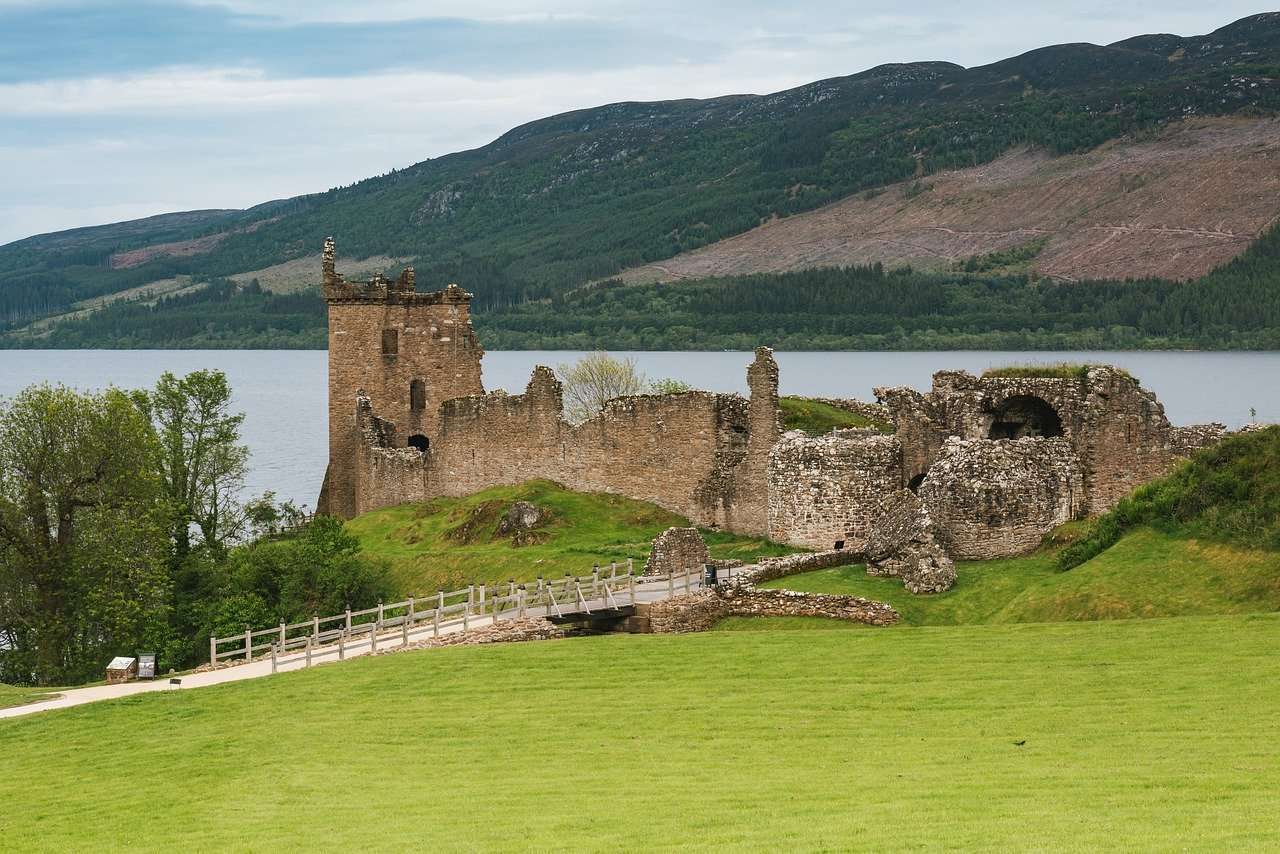
Just like Eilean Donan, I bet you’ve already seen Urquhart Castle, even if you’ve never actually been there. That’s not because it’s particularly big, but because it’s situated in a spectacular setting on the shores of every tourist’s must-visit loch, Loch Ness.
To be honest with you, there are many other lochs in Scotland that are more scenic – Morlich, Lomond, Shiel, and Awe spring immediately to mind – but because Ness has the legend of the monster associated with it, it seems to attract the most visitors.
Urquhart Castle is easy to reach from either Inverness to the north or Fort Augustus to the south, and it’s worth visiting just to experience the views looking across the vast body of water (it’s so big, in fact, that every lake in England and Wales could fit inside it!).
The story of the castle begins in the late 700s when it was used by the Picts (descendants of Scotland’s Iron Age tribes), who are believed to have established a fort on the site, but that was torn down and replaced with the castle we see today sometime in the 13th century.
Urquhart Castle was integral to the defence of the Highlands, but it was partially demolished in the 17th century and was abandoned and left to fall into ruin until it was handed over to state care in 1911. While it was a popular tourist site for many years it only transitioned into one of the country’s top attractions when Historic Environment Scotland built a multi-million-pound visitor centre near the entrance.
The centre features exhibitions, a cinema, a restaurant, and a shop, and today Urquhart Castle is the third most-visited historic site in Scotland after the castles at Edinburgh and Stirling.
Castle Varrich
- Address: Tongue, Lairg, IV27 4XE
- Contact details: NA
- Out About Scotland Guide: Castle Varrich

Castle Varrich is situated on a hill overlooking the Kyle of Tongue on the far northern tip of Scotland. This vast estuary is wide and flat, so the hill on which the castle sits allows uninterrupted views for miles in all directions, which made it one of the most strategically important sites in Sutherland when it was built.
It’s known that a fortification of some kind has existed on top of the hill where Castle Varrich is located for well over a thousand years – even before the days of the Vikings – but the exact age of the first fort is unknown. Historians believe that Clan Mackay built the current tower sometime in the 14th century, and it originally had two floors, a stable, and an attic.
Castle Varrich can only be accessed on foot as the nearest road is located one mile to the east in the village of Tongue, but a well-maintained footpath connects the village to the castle on a route that will take most people 30-45 minutes to walk. Once at the castle, visitors can climb up a recently installed staircase that leads out onto a viewing platform to enjoy the spectacular views of the Kyle of Tongue before returning to Tongue on the same path.
Frequently Asked Questions
What are Scottish castles called?
Depending on the age, there are several styles of castle in Scotland. The earliest fortifications include hill forts, brochs, and duns.
Stone castles first appeared in the 1200s, then motte and bailey castles in the 11th century. Tower houses were the second-most popular structure in the 14th century after curtain-walled castles, which later underwent Scottish baronial style updates.
How many castles are there in Scotland?
There have been more than 2,000 castles in Scotland throughout its history but many of them do not exist today. Historic Environment Scotland currently lists around 500 buildings that can be classed as fortified dwellings.
Where are the most castles in Scotland?
There are castles across Scotland but one area with the highest number is Aberdeenshire. This is partly due to its location which would have been open to attack from Scandinavia.
What are the best castles in Scotland?
Recommended castles for tourists include; Edinburgh Castle, Stirling Castle, Dunrobin Castle, Blair Castle, Inveraray Castle, Fyvie Castle and Kilchurn Castle.
What is the most visited castle in Scotland?
The most visited castle in Scotland is Edinburgh Castle which attracts more than 2 million visitors each year. Located in the capital city of Edinburgh, it is a historic fortress that has played a significant role in the country’s history.
Edinburgh Castle is perched on top of an extinct volcano – Castle Rock – and offers stunning views of the city. It’s home to the Scottish Crown Jewels, the Stone of Destiny, and the Royal Palace, which were all used in the coronation of Scottish monarchs. The castle is also home to the Scottish National War Memorial and the National War Museum of Scotland.

